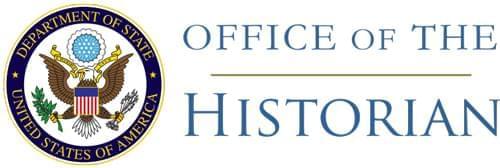793.94/15263
The Ambassador in China (Johnson) to the Secretary of State
[Received July 29.]
Sir: I have the honor to enclose as of possible interest a copy in translation64 of the text of a radio speech delivered by Chou En-lai at Chungking on May 31, 1939 on the subject “The Center of Importance in the Second Stage of the War of Resistance”. The Department will recall that Chou is an influential member of the Chinese communist party, that he was instrumental in obtaining the release of General Chiang Kai-shek at Sian in the closing days of 1936, that he is at present Vice Director of the Political Affairs Board of the Military Affairs Commission, and that since the beginning of the present Sino-Japanese conflict he has served in a liaison capacity between the National Government and Chinese communist authorities. It is common knowledge that he is the one leading Chinese communist who enjoys the respect and confidence of the Generalissimo.
[Page 191]It is well known that Chou’s views on political and military strategy command respect in Chinese circles. Moreover, he is regarded as competent to discuss the problems of the so-called “occupied areas” because that today is his special field of activity and because he has recently returned to Chungking from an extensive tour of investigation of the war areas of Chekiang, Kiangsu and Anhwei.
The burden of Chou’s address is to point out that in the second stage or period of the conflict (which is regarded as having commenced with the fall of Hankow and Canton in October 1938) the main theater of operations is no longer on the main fronts where the opposing armies face each other but in the areas behind the Japanese lines. Chou asserts that having failed to crush Chinese military resistance or to persuade the Chinese people to accept peace terms, the Japanese militarists have been driven to a third alternative, namely, reconstruction in the “occupied areas” to the end that the resources of these areas may be utilized to overcome the existing military deadlock and to accomplish the Japanese object of creating a “new order” of their own fashioning on the Asiatic mainland. Chou considers it significant that Japanese activities have centered in the “occupied areas” during the past six months, including the conducting of extensive military campaigns looking to pacification of the guerrillas and the development of puppet regimes, and comes to the conclusion that these moves have not come up to the expectations of the Japanese. He utters a warning, however, that the Japanese militarists may be expected to exert even greater efforts in this direction in the future, and accordingly exhorts the Chinese people to frustrate the Japanese strategy through wide development of guerrilla warfare and the resultant exhaustion of the Japanese. To achieve the former he calls for the development of additional guerrilla bases in the “occupied areas” and for the accomplishment of the latter he advocates the continuous harassment of the Japanese on all fronts. Chou believes this policy can be executed and calls upon the Chinese people to cooperate in the building of bases behind the Japanese lines in order to defeat the Japanese through the policy of attrition.
There is also enclosed a copy of extracts from a message,64a as published by the Central News Agency, issued by General Chiang Kai-shek to the people of the “occupied areas” on the occasion of the second anniversary of the Lukouchiao incident. This message also emphasizes the importance of the “occupied areas” and the part they must play in the future stages of the conflict.
It is the Embassy’s observation that there is an obviously increasing tendency on the part of the Chinese to divert their military strength from frontal warfare to guerrilla tactics and that this movement is [Page 192] gaining impetus with the passage of time. It is the strategy which the Chinese communists have been advocating since the commencement of hostilities and which appears to have been adopted by the Chinese high military command following the significant military conference held at Heng Shan in November 1938. Reference to the speeches of General Chiang Kai-shek in the earlier stages of the conflict will show that he had the policy of guerrilla tactics in mind and that he was only waiting the development of a set of circumstances, such as the loss of China’s most important lines of communications and industrial centers and of Japanese penetration into the interior and dispersion of troops, to put such a policy into effect. It is becoming increasingly apparent, as Chou En-lai so clearly points out, that the outcome of the Sino-Japanese conflict will be decided in large measure by future developments in the “occupied areas”; and it seems equally clear that the trend of these developments will be dependent to a large extent upon the skill and efforts of the Chinese themselves in waging guerrilla warfare.
Respectfully yours,
